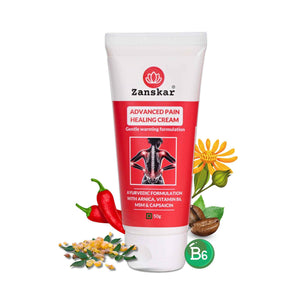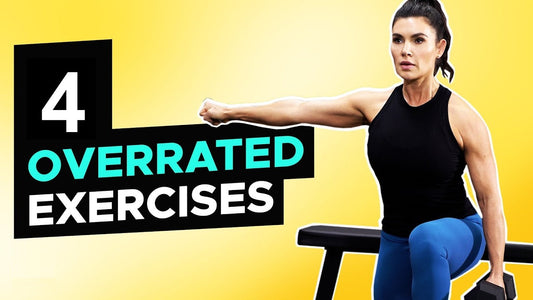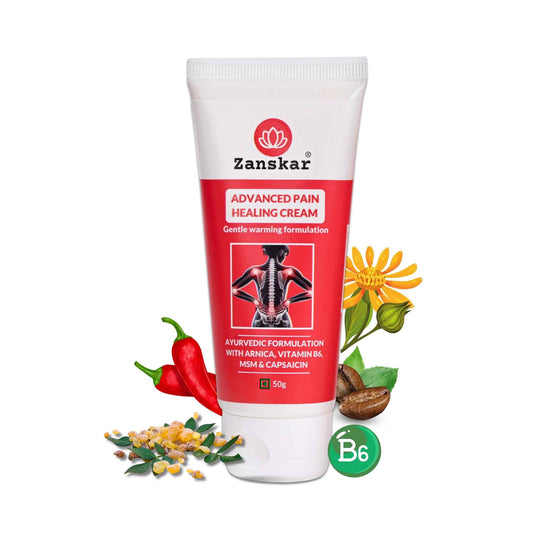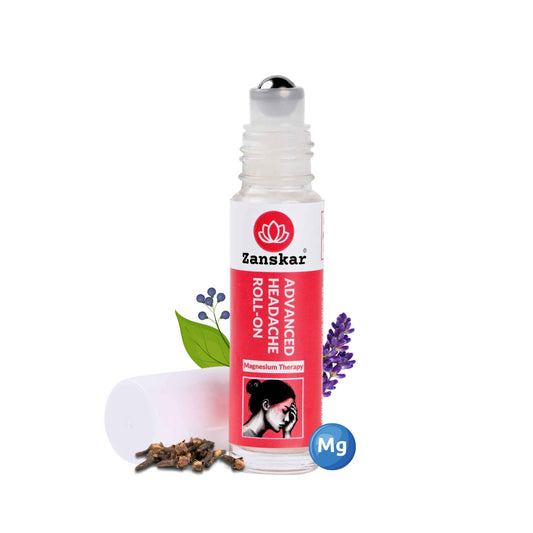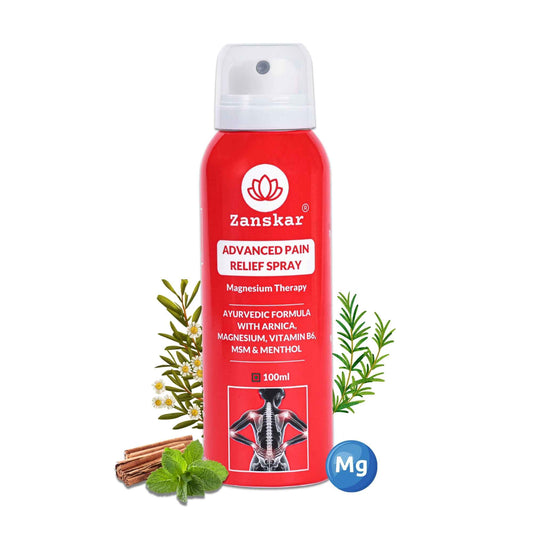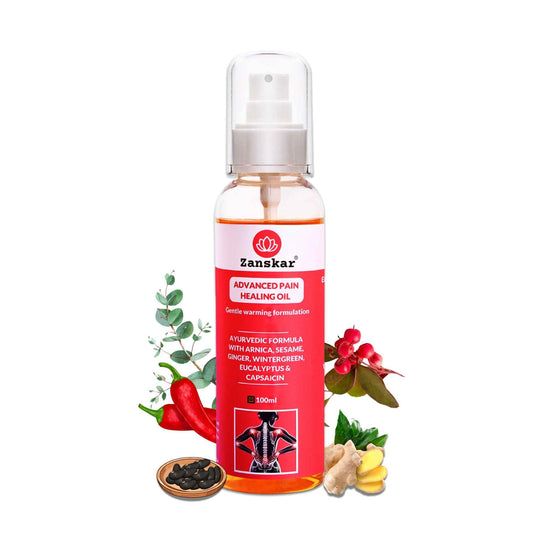
What's the Chronic Pain Cycle? Get Tips to 'Break It' and Start Feeling Better
New year. New you. Same pain? Not this year. You might be ready to leave your chronic, aching joints in 2022, but this can be especially challenging if you’re caught in the chronic pain cycle. This is when persistent joint or back pain causes secondary effects, like trouble sleeping and increased stress, which further amplify pain and perpetuate a vicious cycle. The longer you’re caught in the cycle, the harder it may feel to get out of it.
Chronic pain is incredibly complex and it can affect every single aspect of your life. But you can always overcome it. The best treatment plan starts with understanding the pain cycle and all the factors that influence your pain, then addressing the ones you have the power to take control of, and that usually begins with movement. Know this: There are always steps you can take to regain control of your pain and get back to doing what you love this year.
Here, learn how you can break the chronic pain cycle and prevent future pain flares, especially with exercises from our Zanskar Health physical therapists.
What Is Chronic Pain?
You get a paper cut, you might feel some pain. Roll your ankle playing basketball. Pain. Get out of bed. Pain?
We experience pain for all kinds of reasons but your pain system’s goal is always the same: to protect you. Sometimes, pain tells you there’s tissue damage. If you twist your knee or dislocate your shoulder, pain encourages less movement (temporarily) so your injury can heal.
Sometimes though, your pain system stays on high alert when it’s no longer helpful. This is called chronic, or persistent, pain. It’s when pain lingers beyond a normal recovery period (usually greater than three months).
Chronic pain may come and go, flaring up after certain activities, or it may be constant. It can affect your sleep, appetite, relationships, and more. It can be influenced by a lot of different factors, including physical activity, tobacco use, diet, grief, and more.
Chronic Pain: A Zanskar Health Perspective
Persistent pain may start with an injury or accident. Other times, pain is due to a number of different factors, some of which are uncontrollable (e.g., past injuries). If there’s one thing we want you to know about your pain, it’s this: There are always things you can do to regain control of your pain and get back to doing what you love. While you may not be able to control every factor that’s involved in your pain, you can always take action to slow the pain cycle — and that often starts with moving more. As our Zanskar Health care team says, movement is medicine.
The 5 Stages of Chronic Pain and How to Overcome Them
Getting wrapped up in the chronic pain cycle may be a slow process — so slow you don’t even realize it’s happening. This is what happened to Mitali, a Zanskar Health member who was in a minor car accident on her way home from work six months ago. No one was seriously hurt, but the accident left her achy and sore, especially in her back, which her doctor said was to be expected. What she did not expect, however, was how long her pain stuck around.

1. Fear of Injury
The longer Mitali was in pain the more she feared doing anything that might worsen her pain. Lifting something off the floor didn’t seem worth the risk. Going to the gym felt like an injury waiting to happen. It’s natural to be concerned about doing something that could make your pain worse, which is why she started limiting her movement, exercise, and daily activities.
2. Decrease in Activity
“The most common thing I see is that people don’t know what movements they can do, so they avoid them altogether,” says Dr Rashi Goel, MPT, a physical therapist at Zanskar Health. Although movement can cause a temporary uptick in pain or discomfort, it’s actually a crucial element of recovery. Movement retrains your pain system to be less sensitive, which helps end the pain cycle.
3. Muscle and Flexibility Loss
When muscles aren’t used, they stay tense and eventually can contribute to persistent pain.You may be familiar with the phrase use it or lose it, which is exactly what happens with muscles and joints. “Our bones and ligaments are at the mercy of our muscles and tendons,” says Dr. Goel. “When we consistently use our muscles, that tone contributes to creating space between joints.” The stronger your muscles, the better they can support and cushion your joints and help control pain.
4. Increase in Pain
Mitali’s lack of movement and decreasing strength and flexibility ultimately fed into ongoing pain, which only made it more challenging to be active and stay engaged with those around her. “Inactivity ‘feeds the beast,’” says Dr. Goel. “When you try to resume activity, what you did before becomes painful because of a decrease in muscle, flexibility, and joint lubrication.” This causes many people with persistent pain to change their activities and behaviors, which can affect mental well-being.
5. Unwanted Thoughts, Depression, and Anxiety
Eventually, Mitali began to feel anxious and sad. She missed going to the gym. She caught herself thinking things like ‘Pain is just a part of life now.’ These thoughts made it even more challenging to increase her movement, which made her feel stuck.
This doesn’t have to be the case for you, though. Although ongoing pain can put stress on your mind and body, you can always retrain your pain system. You don’t need to stop the pain cycle in its tracks, but slowing it down is a very effective way to break free of it altogether.
Breaking the Pain Cycle
These tips can help you control your pain and slow the pain cycle, especially if physical activity causes you to experience an uptick in pain:
· Find a go-to stress management strategy. Those who practice mindfulness-based stress reduction techniques see greater improvement in pain than those who don’t, according to a study from PLOS One. You can’t avoid all of life’s stressors, but you can try techniques such as breathing exercises, journaling, or listening to music so your body can handle stress better.
· Apply ice and heat. Heat (like a heating pad) temporarily relieves pain by increasing blood flow and relaxing tight muscles. Ice or cold packs help temporarily decrease pain by reducing inflammation. Use whichever method works best for you, or use a combination of ice and heat for 20 minutes at a time.
· Use OTC Pain medication as needed. Pain relievers can be helpful for pain. It’s important to make sure that you are safely able to take these medications, based on your medical history.
· Start doing exercise therapy. Targeted movements, exercises, and stretches increase the strength and flexibility of the structures in and around a painful joint. (More information on this below.) Physical therapists can design a customized routine to stretch tight areas and strengthen weak ones, restoring mobility and reducing and preventing pain. You can see a physical therapist in person or use a program like Zanskar Health to access a PT via telehealth/video visit.
Lifestyle changes that can help you prevent getting caught in the pain cycle include:
· Quit smoking. Smoking is associated with greater pain intensity and slower recovery, according to the journal Pain.
· Change positions frequently. “Our bodies weren’t designed to sit at a desk for hours at a time,” says Dr. Goel. “When you don’t move around enough, your joints and tissues can get grumpy.” While experts don’t demonize any one particular posture, if you have to sit or stand for long periods, shift positions every 15 to 30 minutes and take breaks to stretch, walk, or do a few exercises. Short bouts of movement can provide the same pain-relieving benefits as continuous sessions of exercise.
· Adjust your workspace. Adjust the height of your desk, chair, and computer so your monitor is at eye level and your knees are slightly lower than your hips.
· Maintain a healthy body weight for you. The ideal weight is different for everyone but maintaining a body weight that works for you can help reduce extra pressure on the joints of your lower body.
Exercise to Break the Pain Cycle
You may have noticed resting isn’t recommended for breaking the pain cycle. The idea that rest is necessary for pain relief and healing is a common misconception and outdated advice.
Experts now know that inactivity actually draws you further into the pain cycle. The best, most effective way to stop the pain cycle is with movement — even if you feel some discomfort from it. When you’re starting to get active again, remember this key message: hurt does not necessarily equal harm.
Exercise and activity to stop the pain cycle doesn’t have to be vigorous. You can try:
· Short walks
· Going to the zoo with your grandkids
· Parking at the back of the parking lot
· Taking the stairs instead of the elevator
· Performing squats (or another exercise) during each TV commercial break
· Doing heel raises at the counter while you cook
· Standing up every hour (for an added bonus, stand up without using your hands)
· Exercise therapy (more on this below)
Exercises to Break the Pain Cycle
Exercise therapy helps you gradually increase strength and decrease pain. Here are a few gentle exercises recommended by Zanskar Health physical therapists that generally help keep your joints healthy and your muscles strong. Note: The right exercises for you depend on your pain areas and personal factors, which is why it’s a good idea to work with a physical therapist or use a program like Zanskar Health. You can see a physical therapist in person or use a program like Zanskar Health to access a PT via telehealth/video visit.
PT Tip: Make Small Changes for a Big Impact
Something as simple as increasing awareness of pain can play a part in stopping the cycle, says Dr. Goel. “For example, let’s say someone with chronic shoulder pain works at a desk all day. In a meeting with their Zanskar Health physical therapist, they realize that they have a habit of leaning on their arm rest a lot, which actually feeds into the cycle of chronic shoulder pain,” she says. “By adjusting their position during meetings, they can reduce their pain by 50% in the first week.” This, then, allows them to start doing other exercises to strengthen their shoulders and prevent future pain flares.
When trying to stop the cycle, look for things that will make the largest impact for the least amount of investment. Once you see the impact, you’re probably going to be more confident working exercise therapy into your routine. And that all leads to a glorious snowball effect, says Dr. Goel.
Learn More About Zanskar Health for Chronic Pain Relief
If you have joint or muscle pain that makes it hard to move, Zanskar offers the most advanced full stack pain relief solutions for you.
Now available to purchase, Zanskar® Advanced Pain Healing Cream has a unique formulation of natural ingredients like Arnica, Vitamin B6, MSM and Capsaicin, which is trusted by over 20L+ pain sufferers globally. It provides lasting relief from muscle and joint discomfort that you can feel good about. Get your fix before stocks run out - buy now.
You can also gain access to therapeutic exercises and stretches for your condition by downloading the Zanskar Health physiotherapy mobile app. Additionally, you’ll have a personal care team to guide, support, and tailor our program to you, including behavioral and nutritional coaching.
Download our mobile app here 👉 download and track your exercise streak.
Medical Review: This article is written by Dr Nishtha Mittal (Senior Health Content Editor at Zanskar Health) and has been medically reviewed by Dr Rashi Goel (Senior Physiotherapist at Zanskar Health). This article and its contents are provided for educational and informational purposes only and do not constitute medical advice or professional services specific to you or your medical condition.

